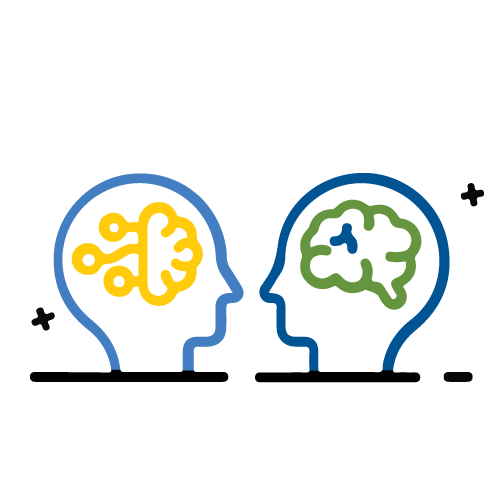Curated by: Sergio A. Martínez
There’s a (not very old) saying about how you can’t manage time, only energy, and nowhere is this truer than in the world of software development. As a developer, there are always going to be more things on your to-do list than you can hope to accomplish in a month or week, so the key is to learn how to stop looking at them in terms of work hours, or you run the risk of being overwhelmed.

Think about it this way: when you’re trying to manage your time, you’re limited by the number of hours in a day, but when you’re managing your energy, you can get a lot more done because you’re not restricted by the clock. You can work for as long as you have the energy to do so and take breaks when you need to, meaning that you can be much more productive overall.
There’s also another advantage to managing your energy instead of your time, especially if you’re part of a Nearshore software development company like Scio: Collaboration. When you’re working with a team of developers in a variety of time zones, it’s important to be able to manage your energy levels so that you can be the most productive at specific hours of the day, or risk getting burned out. The key is to manage your energy, take breaks when necessary, and work along your natural body clock to be as productive as you want.
Also, managing your energy instead of your time also allows you to be more flexible in your work schedule. If you have family or other commitments, you can work when it’s convenient for you and take breaks when you need to. This flexibility is essential for software developers who want to maintain a healthy work-life balance. So yeah, this approach might solve a lot of things for the busy developer of today, but what is the secret to this? How can you start effectively managing your energy?
The delicate balance of energy
You should know that everyone has different “input/output” settings, so to speak, that dictate how easily we spend and regain energy during the average workday. And this is because programming affinities vary from person to person, and different tasks require a different effort from us.
“As I got up one morning and looked at 15+ meetings starting at 8 am, and ending just before 11 pm, all I could feel was exhaustion even before my first meeting had started […] but in my own start-up, I racked up 8 -100hr weeks without a sense of mental exhaustion. I wrote code well until after midnight every single day, took a cab home, and started refreshed the next morning”, expresses Gerald Haslhofer, an experienced engineer and team lead at Microsoft in his blog “Manage your energy, not time”. What he is getting at is that time commitment by itself wasn’t the deciding factor between feeling exhausted and refreshed when working; instead, the nature of both responsibilities demanded a very different energy output from him.
The trick is realizing that not all tasks drain energy from you at the same rate, and in fact, some of them help you regain it instead, and those generally are the activities you enjoy doing. Just think about your average sprint: which parts of it are your favorites? And why?
In other words, the best software developers know how to manage their work so that they can maintain a consistent level of energy throughout the day, week, or month by spacing their responsibilities evenly. They know when to push themselves and when to take a break, in many cases following the so-called “20% Rule”:
“If you spend less than 20% of your day on activities that energize you, you will quickly be unhappy with your job no matter what.”

After all, it’s no secret that the traditional 9-to-5 job is becoming increasingly obsolete, and with the rise and popularity of remote work, more and more people are seeking out alternative arrangements that offer greater flexibility and autonomy. However, even with these changes, the majority of workers are still spending the majority of their time on activities that don’t energize them. And considering how this 20% accounts for about 80% of your results at the end of a project, finding the flexibility necessary to manage your “input/output” of energy is more important than ever. So here are a few ways you can start to reclaim that 20% and beyond:
- Protect your creative time: We know that software developments involve many things beyond solving the puzzles of writing code, but having a dedicated schedule to sit down and go wild with your favorite part of the job is how you get the best results. So if you are in a good environment where you are free to set aside some time during the day without interruptions, you’ll quickly see how energized and focused you can be.
- Start with the big things: It probably sounds like a good idea to begin your day by tackling the “smaller” stuff of your to-do list first, like attending meetings, correcting mistakes, compiling feedback, etc., and leave the big, juicy stuff for later in the day interrupted, but in practice, it can have a negative effect. After all, if you only output energy early, how much will you have left by the end of it? So starting with the big stuff you like to do the most can be a better approach; by the time you need to do the not-as-fun parts of your day, you will still be fresh and ready.
- Keep your mind in mind: How do you feel about any given task in your daily schedule? What excites you, and what makes you feel tired? Paying attention to what you feel about a task is important for the final result; your mood, needs, and obstacles affect everything in your workflow, and in many cases, even doing what you love can feel like a chore if you are doing it with the wrong mood. So taking breaks, discussing the issue with your teammates or manager, and trying to occupy yourself with something else entirely can help you accomplish stuff even if your energy is not up to it that day. It’s okay, we are humans, and never forgetting that fact can make you more effective in the long run.
Collaboration is key
As a software developer, you have a career that allows you to work from anywhere in the world. And as freeing as that is, the rules apply the same whether you are in an office or at home, so learning how to manage your energy during the day is crucial to reaching success.
That’s why it’s so important to find ways to infuse your work with meaning and purpose. Whether it’s by taking on additional responsibilities outside of your core job duties or simply seeking out opportunities to contribute to something you’re passionate about, there are plenty of ways to make your job more satisfying. That’s why a good collaboration culture is so important today: these opportunities are more common in an environment where everyone is on the same page concerning individual talents and needs.
One way to do this is to take advantage of the collaboration offered by Nearshore companies like Scio we were talking about at the start of this article. Working with other developers in time zones close to you can help you get more done in a day, as you can overlap your work hours and get more things done, although it’s not just about the number of hours you can work. Nearshore collaboration also helps to create a culture of continuous learning, where you and your team are constantly sharing new ideas and approaches, creating the kind of cross-pollination of ideas that leads to more productive and innovative software development.
That’s why a Nearshore development company like Scio is so attractive in terms of flexibility and collaboration; Nearshore is all about culture and working with people who understand your point of view and approach. This makes it easier to communicate and collaborate effectively because when working with people who understand where you come from, can help you focus your energy on the task at hand, rather than on trying to explain yourself over and over (the source of many superfluous meetings that you might be familiar with).
And when you collaborate with nearshore teams and clients from different cultures you are constantly learning new things, it’s easier to spend a large portion of your day on tasks that energize instead of exhaust. That’s why it’s so important to find ways to infuse your work with meaning and purpose, whether it’s by taking on additional responsibilities outside of your core job duties or simply seeking out opportunities to contribute to something you’re passionate about, there are plenty of ways to make your job more satisfying.

The Key Takeaways:
- Productivity is better conceptualized as the amount of energy you have to spend on a task, instead of the time you take to complete it.
- Not all tasks require the same amount of energy, and the natural affinities of the person define how much effort you need to complete something.
- Good management takes this into account, and plans around it, assigning optimal scheduling for meetings, sprints, reviews, etc.
- To this end, google collaboration is critical to the correct use of energy during software development; a good team dynamic means you spent less energy trying to keep everyone on the same page and more on the product itself.
Scio is an established Nearshore software development company based in Mexico that specializes in providing high-quality, cost-effective technologies to help you reach new heights. We have been developing since 2003 and our experience gives us access not only to the knowledge but also the expertise needed when tackling any project. Get started today by contacting us about your project needs – we’ll be happy to help you achieve your business goals.
